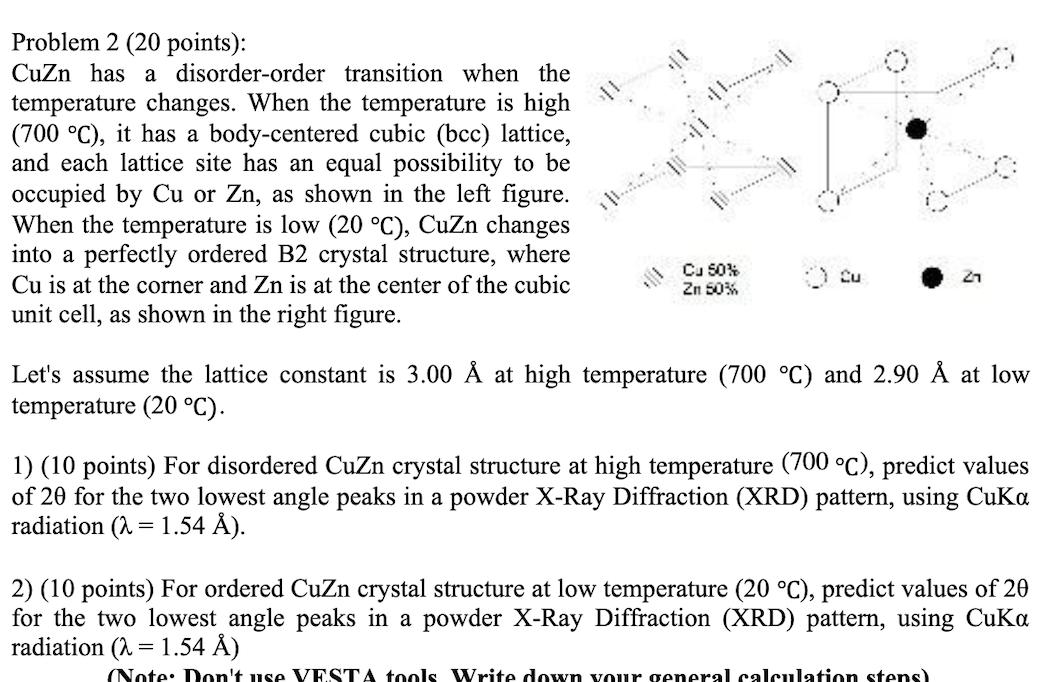Answered step by step
Verified Expert Solution
Question
1 Approved Answer
Problem 2 (20 points): CuZn has a disorder-order transition when the temperature changes. When the temperature is high (700 C), it has a body-centered

Problem 2 (20 points): CuZn has a disorder-order transition when the temperature changes. When the temperature is high (700 C), it has a body-centered cubic (bcc) lattice, and each lattice site has an equal possibility to be occupied by Cu or Zn, as shown in the left figure. When the temperature is low (20 C), CuZn changes into a perfectly ordered B2 crystal structure, where Cu is at the corner and Zn is at the center of the cubic unit cell, as shown in the right figure. ......... Cu 50% Zn 50% 27 Let's assume the lattice constant is 3.00 at high temperature (700 C) and 2.90 at low temperature (20 C). 1) (10 points) For disordered CuZn crystal structure at high temperature (700 C), predict values of 20 for the two lowest angle peaks in a powder X-Ray Diffraction (XRD) pattern, using Cuka radiation ( = 1.54 ). 2) (10 points) For ordered CuZn crystal structure at low temperature (20 C), predict values of 20 for the two lowest angle peaks in a powder X-Ray Diffraction (XRD) pattern, using Cuka radiation ( = 1.54 ) (Note: Don't use VESTA tools Write down your general calculation stens)
Step by Step Solution
There are 3 Steps involved in it
Step: 1
1 For the disordered CuZn crystal structure at high temperature 700 C Given Lattice constant at high ...
Get Instant Access to Expert-Tailored Solutions
See step-by-step solutions with expert insights and AI powered tools for academic success
Step: 2

Step: 3

Ace Your Homework with AI
Get the answers you need in no time with our AI-driven, step-by-step assistance
Get Started


